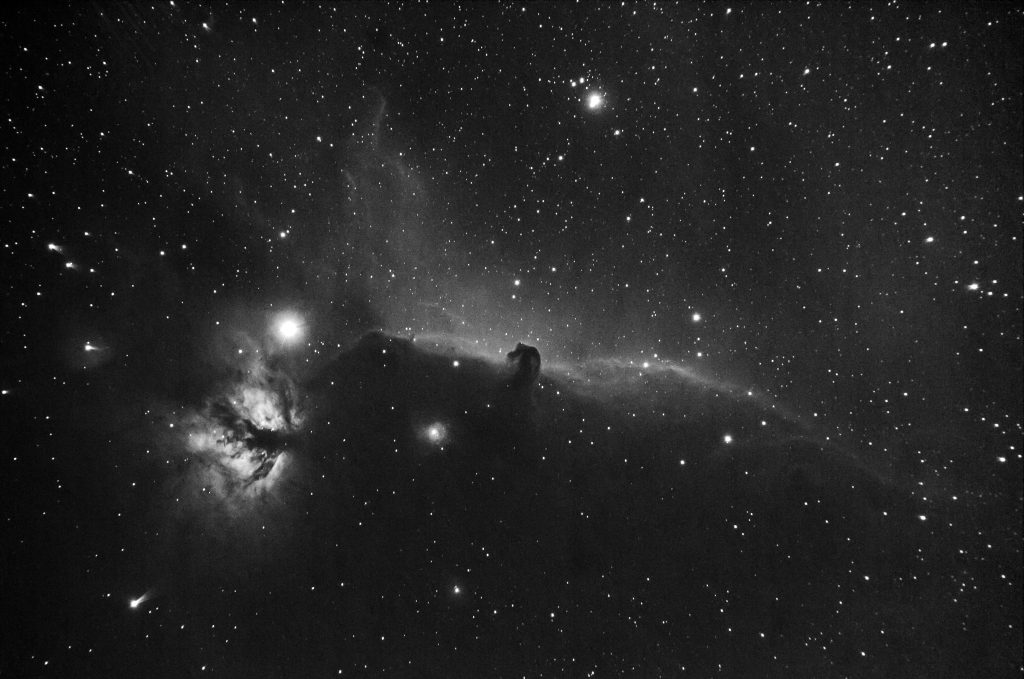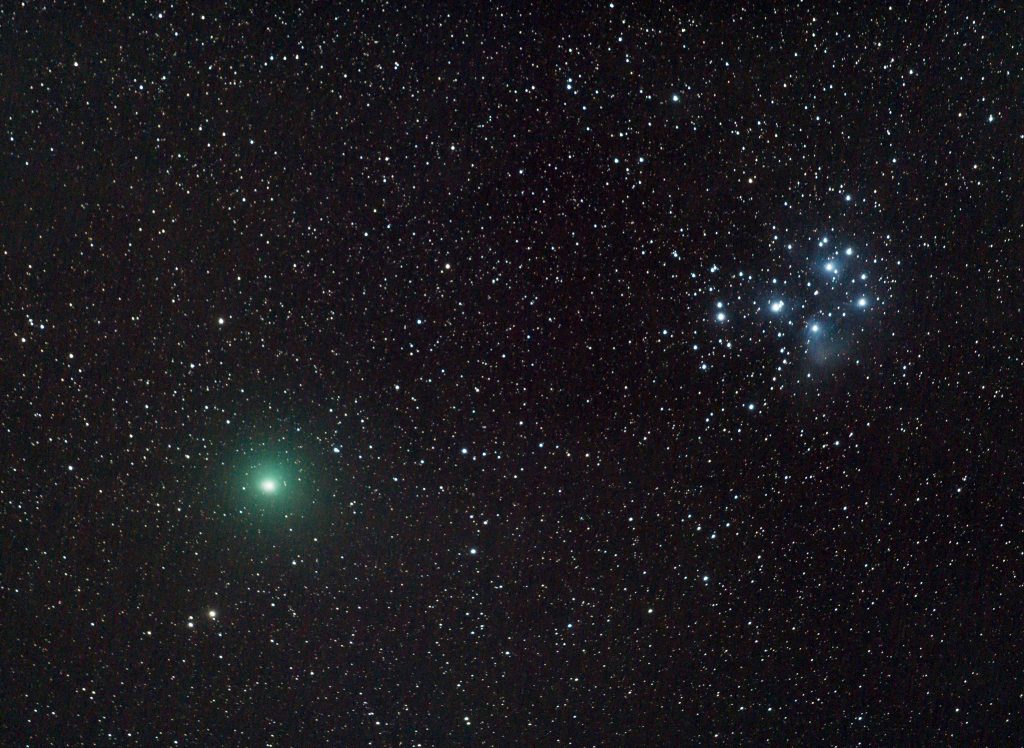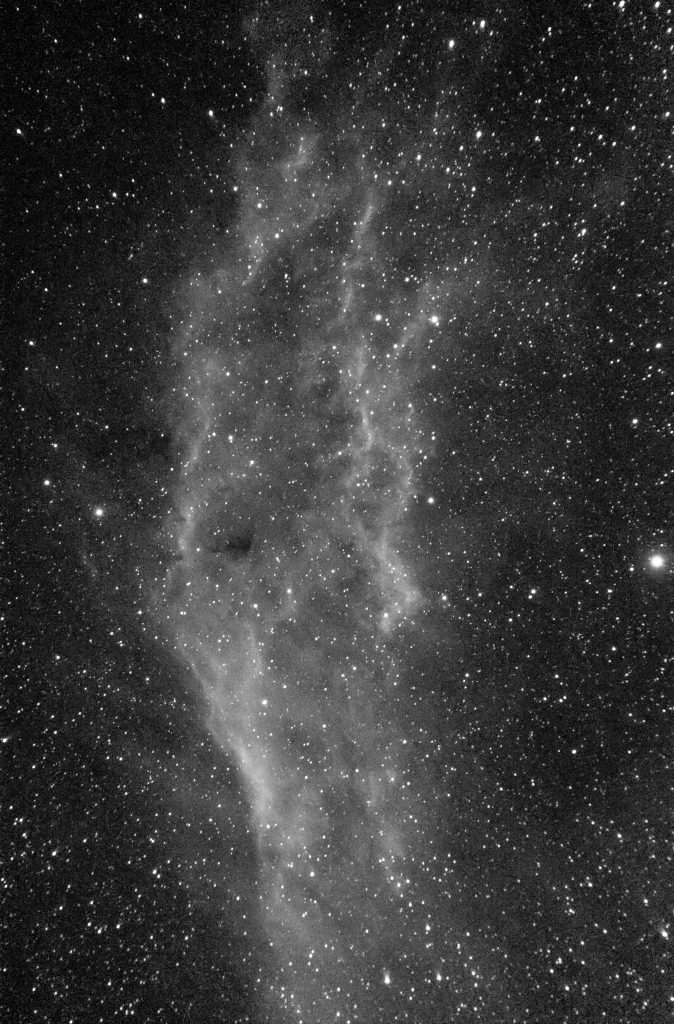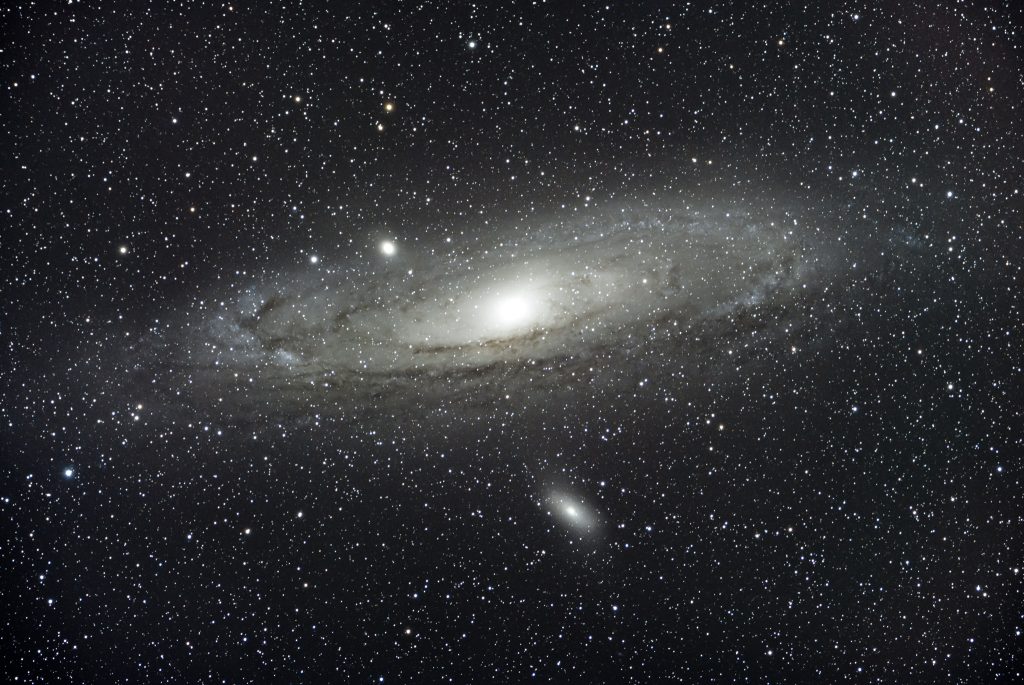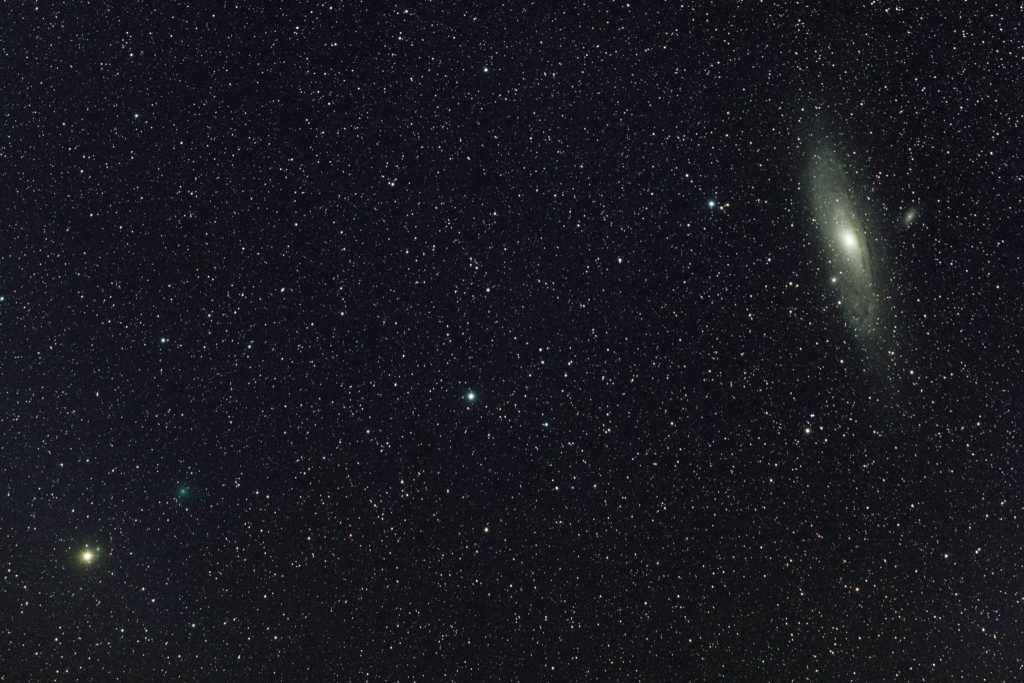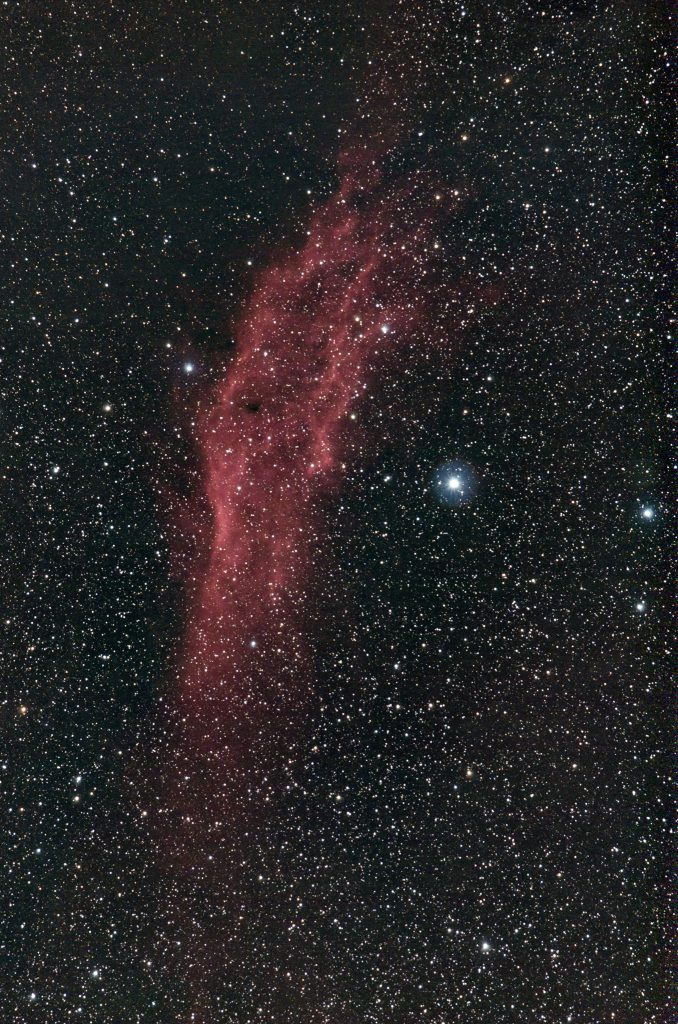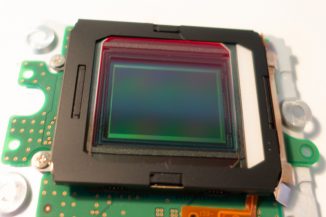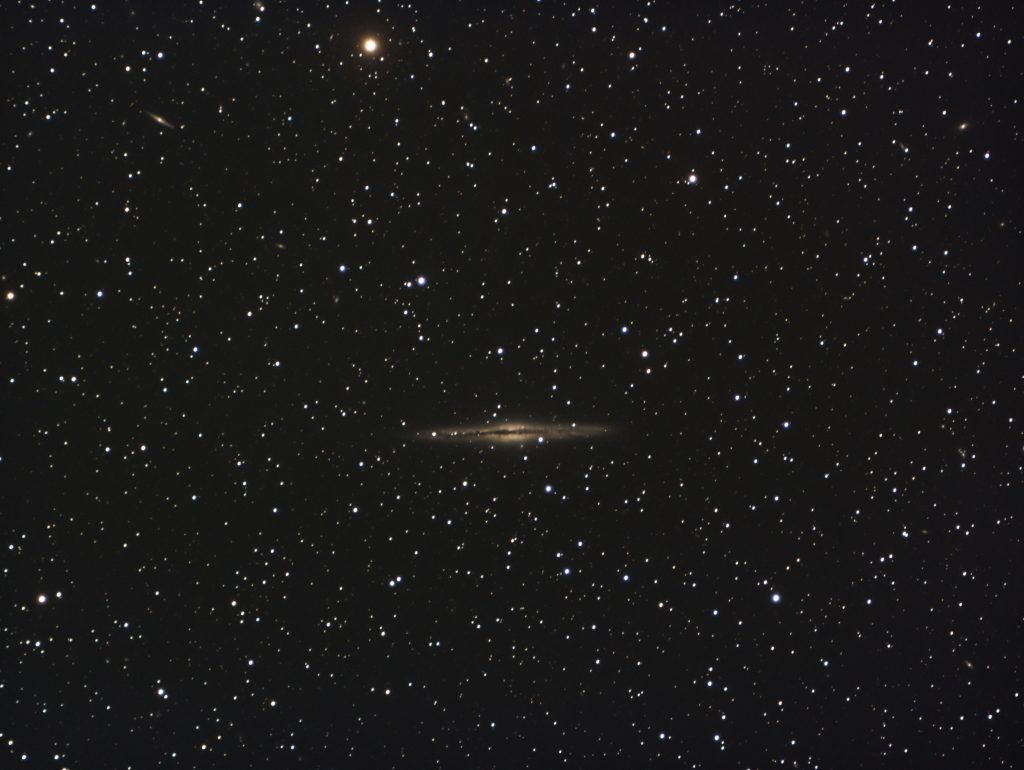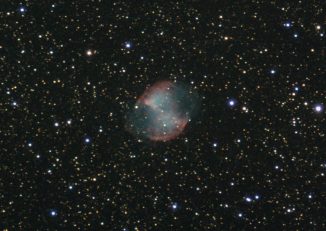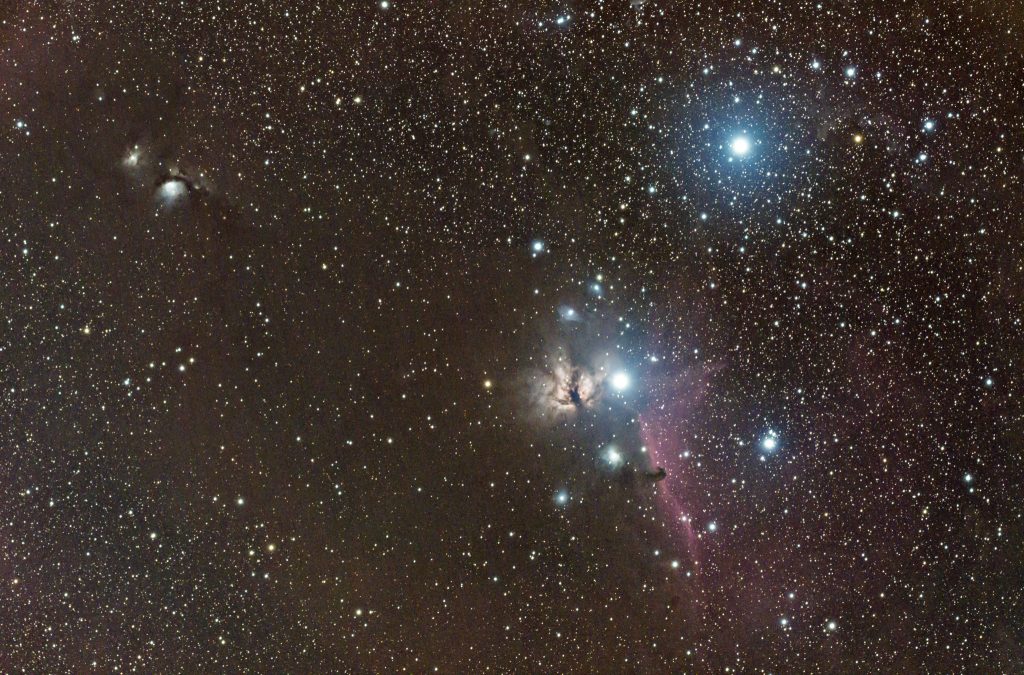
On December 26th we were invited to christmas dinner at my sisters place. I brought the Vixen Polarie, the Takahashi FS-60CB and the Nikon D750 to do some astrophotgraphy during the evening.
The image above records some faint nebulosity across central Orion. From the horsehead nebula B33 silhouetted against IC434 to the flame nebula NGC 2024. In the upper left, the M78 nebula with its surrounding NGC objects is also visible. In the corner a hint of Barnards loops is discernible
Read More